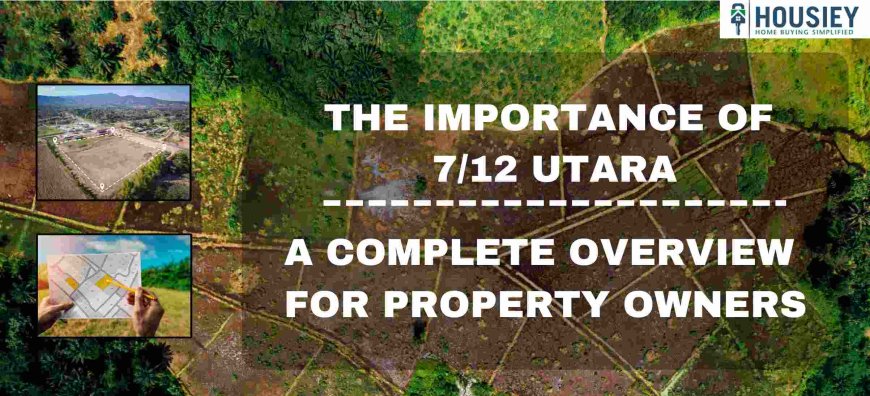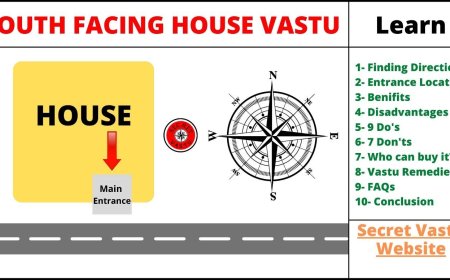The Importance of 7/12 Utara: A Complete Overview for Property Owners
Owning a property in Maharashtra comes with its set of documents and legalities, one of the most crucial being the 7/12 Utara Maharashtra. This document is fundamental for property owners, potential buyers, and anyone involved in real estate transactions.

The Importance of 7/12 Utara: A Complete Overview for Property Owners
Understanding land ownership documents in India is crucial, especially in states like Maharashtra. The Importance of 7/12 Utara lies in its role as an official land record that determines ownership, usage, and rightsmaking it essential for buyers, sellers, and property owners alike.
What is 7/12 Utara?
The 7/12 Utara, also known as Saat-Baara-Utara, is a land extract document that combines Form 7 and Form 12. Issued by the Revenue Department of Maharashtra, it records details of the landholder and agricultural data related to a particular plot of land.
-
Form 7: Contains details about the landowner and their legal rights.
-
Form 12: Highlights how the land is being used for agriculture, including crop information and seasonal patterns.
Key Components of the 7/12 Utara Document
To fully grasp the Importance of 7/12 Utara, you must understand its structure. This document includes:
-
Survey Number: Unique identifier for the plot.
-
Area of Land: Mentioned in hectares or acres.
-
Landowners Name: Legal landholder(s).
-
Cultivation Information: Crop types, irrigation methods.
-
Mutation Records: Changes in ownership or legal rights.
-
Taxation Details: Local taxes or dues linked to the land.
Why Is the 7/12 Utara Important?
1. Legal Ownership
This document serves as legal proof of ownership, making it essential for property-related transactions and court proceedings.
2. Title Verification
Buyers can verify the title through the 7/12 document before purchasing a property, reducing the risk of fraud or unclear ownership.
3. Agricultural Credit Access
Farmers can submit the 7/12 extract to banks for loans and subsidies. It verifies they possess land and shows cultivation history.
4. Land Conversion
If you wish to convert agricultural land to residential or commercial use, the 7/12 record helps in legal processing.
5. Inheritance and Mutation
It provides records of ownership transfer through inheritance or sale, maintaining a clear ownership trail.
6. Dispute Resolution
It is admissible in court as legal evidence in land disputes, offering a timeline of rightful ownership and land use.
7. Protection Against Encroachment
It acts as a boundary and ownership record, discouraging unauthorized possession.
8. Revenue Collection
Government agencies use it to calculate taxes or cess related to land and agricultural output.
9. Transparency
The 7/12 document supports transparency in rural land ownership, especially for tribal and marginalized communities.
10. Digitization Benefits
With portals like Mahabhulekh and e-Mojani, 7/12 extracts are now accessible online, streamlining record-keeping and improving trust.
When Do You Need the 7/12 Utara?
-
Selling land: To prove legal ownership.
-
Buying land: To verify seller's title.
-
Applying for bank loans: Especially agricultural loans.
-
Government compensation: For land acquisition.
-
Mutation requests: Post-inheritance or sale.
How to Apply for 7/12 Utara
Offline Process
-
Visit the Talathi office of your village.
-
Submit a formal application with identification.
-
Pay nominal fees, if applicable.
-
Receive certified extract after verification.
Online Process
-
Visit Mahabhulekh (mahabhulekh.maharashtra.gov.in).
-
Choose district, taluka, and village.
-
Enter survey number or name.
-
Download and print the extract.
Common Terms Found in 7/12 Extract
| Term | Meaning |
|---|---|
| Gat Number | Plot ID assigned to land |
| Khata Number | Account Number of landholder |
| Hissa Number | Subdivision of survey number |
| Mutation Entry | Record of change in ownership |
| Kul | Cultivator or farmer name |
| Shet Number | Plot number used in the village map |
Benefits of 7/12 Utara for Property Owners
1. Enhances Credibility
The document improves your credibility with banks, financial institutions, and government bodies.
2. Simplifies Legal Procedures
Whether it is property division, partition, or sale, the 7/12 extract streamlines documentation.
3. Transparency in Transactions
Buyers and sellers can review ownership history, increasing transaction transparency and minimizing legal risks.
4. Rural Empowerment
Farmers can access subsidies, irrigation schemes, and modern equipment based on verified 7/12 land data.
5. Land Planning & Management
Landowners can manage sowing schedules, irrigation plans, and crop cycles efficiently using the agricultural data recorded.
Challenges and Limitations
Even though the 7/12 Utara is extremely useful, it has its limitations:
-
Does Not Guarantee Marketable Title: It confirms possession, not always ownership.
-
Possible Human Errors: Manual records may include typos or mistakes.
-
Delayed Mutation: Ownership changes may not be reflected immediately.
Digitization of Land Records
Maharashtra has made significant strides by launching the Mahabhulekh portal, allowing citizens to access:
-
7/12 Utara
-
8A Extract
-
Ferfar Records (Mutation)
Benefits of digitization include:
-
Fast access
-
Reduced fraud
-
Traceable history
-
Efficient governance
How Buyers Can Use 7/12 Utara in Real Estate
Property investors or buyers can use the document for:
-
Checking land use classification.
-
Ensuring no encroachments.
-
Verifying ownership lineage.
-
Confirming absence of disputes.
Ten Frequently Asked Questions (FAQs)
Q1. What is the 7/12 Utara document?
A land record combining ownership and agricultural data.
Q2. Who issues the 7/12 extract?
The Maharashtra Revenue Department.
Q3. Is it needed for buying land?
Yes, it verifies the sellers ownership.
Q4. Can it be downloaded online?
Yes, from the Mahabhulekh portal.
Q5. Does it show crop details?
Yes, Form 12 includes crop and cultivation data.
Q6. Is mutation history available?
Yes, mutation entries are listed in the extract.
Q7. Can I apply for loans using it?
Yes, it's essential for agriculture loans.
Q8. Is it a sale deed?
No, it's a land record, not a sale agreement.
Q9. Does it confirm title ownership?
It confirms possession, not necessarily title.
Q10. Is it mandatory for land division?
Yes, it's used in partition and inheritance cases.
Conclusion
The Importance of 7/12 Utara cannot be overstated for anyone involved in land ownership, agriculture, or real estate investment. This powerful document bridges the gap between legality and usability, ensuring that landowners are recognized, protected, and empowered.
For property buyers, it ensures that the land you are investing in is free of disputes, rightly owned, and has proper land use classification. For farmers, it opens doors to various government benefits and financial schemes. For the legal system, it serves as credible evidence in case of land-related disputes.
Maharashtras move to digitize land records, including the 7/12 extract, further amplifies its usability and reduces delays, making it a truly foundational asset for anyone dealing with rural land.
In summary, this document is not just paperworkits a powerful tool for transparency, empowerment, and secure ownership.
To explore the complete guide on the Importance of 7/12 Utara, visit the official Housiey blog.




























